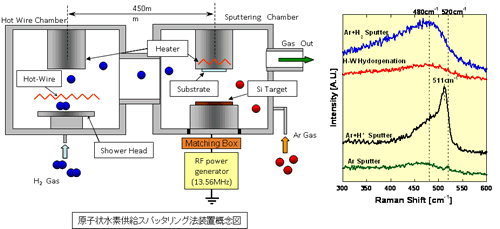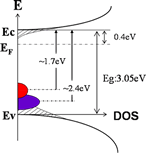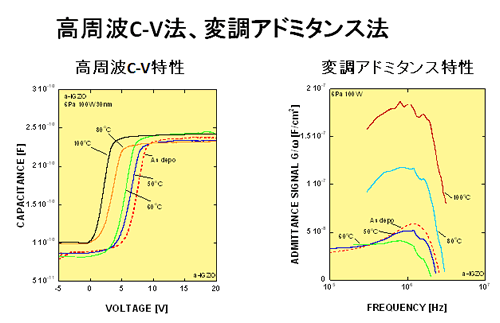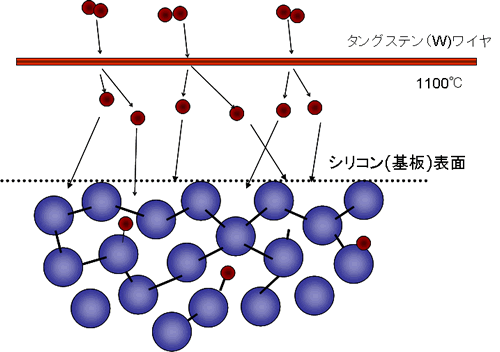Fundamentals of solar cells and power generation/storage system
Themes
- Fabrication of poly-crystalline silicon film at room temperature by sputtering method using atomic hydrogen
- Measurement of the gap states and band tail absorption by Constant Photocurrent Method (CPM) in a-InGaZnO4
- Measurement of the MIS interface defects by Frequency modulated admittance method.
- Computational Fluid Dynamics of Atomic Hydrogen in HW-CVD
Fabrication of poly-crystalline silicon film at room temperature by suputtering method using atomic hydrogen
We have been investigating how to deposit high performance poly-crystalline silicon films at room temperature in safety.
Measurement of the gap states and band tail absorption by Constant Photocurrent Method (CPM) in a-InGaZnO4
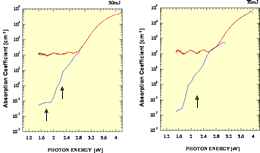
We have evaluated the gap states of an a-IGZO film deposited by PLD by CPM.
It is found that two large and wide states in the midgap are located at 1.7eV, 2.4eV below the bottom of the conduction band.
Measurement of the MIS interface defects by Frequency modulated admittance method.
The midgap states 0.05−0.1eV below from the bottom of conduction band is observed by Frequency modulated admittance method.
Frequency modulated admittance method
Interface states are evaluated by the frequency modulated admittance method as depending on temperature and voltage.

q: electric charge、k: Boltzmann constant、T:Temperature、Nss: Interface defect density f0: Fermi function、Cn: electron capture rate、nso: carrier densityn:electron emission rate、A*: Richardson constant、σn:carrier capture cross section、Ec-Ed:depth of interface trap
Computational Fluid Dynamics of Atomic Hydrogen in HW-CVD
~1100oC Heated tangsten wire can effctively crack the hydrogen gas. We use this technique as Hydrgenation*.
The gas flow pattern easily affected by wire temperature. The gas flows avoid the heated wire. It resuts from the heat radiation. The figure below shows the result of computational fluid dynamics.


Parameter :flow rate 1000[SCCM],Pressure : 5[pa],Tungusten wire temperature :1100[℃] ,Substrate temperature300[℃]
*Hydrogenation treatment
the dangling bonds are terminated by hydrogen. The device performance can grow performance by the hydrogenation treatment.











